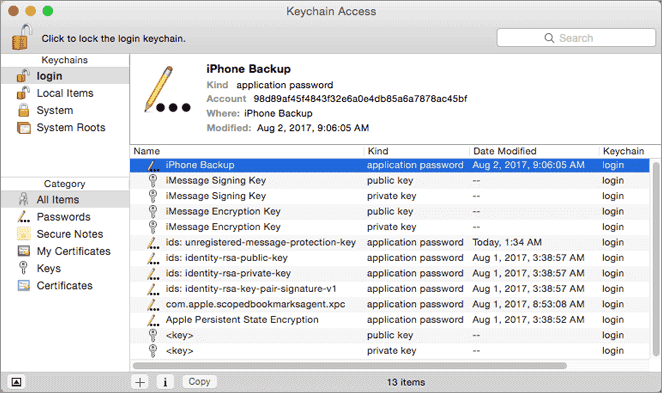Deciding to launch an app, all startups and business owners’ common goal is to make money on it. However, users always want to get software solutions for free. But don’t think that this is an unsolvable problem! Today, you can earn more even by making a free app. According to Statista, there is US$29 billion from the paid apps revenue, while free ones are US$37 billion. So, there are variants that allow us to monetize such software solutions.
This article will help you to learn about these monetization methods and things you should pay attention to keep your users and profit.
The best monetization strategies
You can make money on the free app by using various monetization strategies. Let’s look at the most popular ones and see what approach suits certain apps’ types and what doesn’t.

In-app purchases
This method works well for apps that offer users the opportunity to buy products. For example, it can be a payment for unlocking functionality or purchasing virtual items, such as in games (furniture in a virtual house, weapons, coins).
The store that hosts the app processes all monetary transactions, and the owner takes a commission for each of them. You can set any price and make money. So think over the ways to interest them in spending money.
Affiliate Income
A strategy is used by the news and event apps, social networks, and catalogs where only the affiliated companies’ restaurants and shops are located.
Using this approach, you can earn well by promoting your partner’s products or applications from the same niche within your app.
Subscription
Subscription is an excellent way to profit. Of course, it’s a usual practice when the apps are free. But don’t forget to provide some paid content to engage an audience. So you can earn money on that because your app users paid subscriptions monthly to stay up to date with news, receive fresh articles, music, etc.
Freemium
The Freemium strategy allows the user to try a product for free before purchasing a premium account. But remember: if the customers have only two options – download a premium app or a free one, they choose the second one. If you only have a premium account, the users don’t know if it’s worth their money. So you have to convince them of your offer value.
Advertisement
Choosing this monetization strategy, you need to determine the most suitable ad for your app (small, large, static, animation). Also, think over how you’ll receive money from showing it – every time a user sees or clicks on the banner, installs the advertised app, or buys something in it, etc.
However, remember: so as not to annoy users, don’t add too many ads and put only relevant ones. For instance, if your app is for anglers, you can place banners with fishing products.
Sell your API
Free applications can profit without advertisement. How? Here is one way you can choose to earn money – create a specific software product and sell the API to it or the complete source code. However, it’s in the case your app has unique features that are nowhere else.
So, you’ve chosen a monetization strategy for your app. Now it’s time to think about how to attract more customers to get more money.
Get more users to get more money
To get the maximum income from a free app, as many users as possible must download it. To involve the customers, they should know more about your product. Therefore, promotion is one of the critical things that must be thought out long before launching the project.

So, you can do a significant half of the work by yourself. But what is better and more reliable – entrust it to professionals. In any case, you’ll need to consider the following:
- Define your audience.
It doesn’t matter whether you think about how to make an app like Tinder or a Glovo-like service – you should start developing from the MVP. Why? It’s a cheap variant that you provide to your potential users to rate it and leave feedback.
Analyzing all the reviews, you see consumers’ age, occupation, and other vital data. If you notice that your primary users are kids or teens, you can add features, change colors in the app, etc., to engage the older generation. If you only want to focus on the kids, you can update the app with fun, colorful elements.
- Cooperate with your clients.
You can speak directly to the relevant audience to convince them of your app’s usefulness. Also, it’ll be a good idea to suggest friends and colleagues install the application so that they test and evaluate it.
- Make it social.
It’s hard to overemphasize the idea of integrating the app with social networks. Remember: the more social networks you connect with, the more users worldwide will find out about your product.
- Turn it into a game.
Gamification may provide your app with many advantages, and the biggest one is users’ engagement. For instance, if you create a fitness app, you can add step counting and set tasks for your friends to attract customers and inspire them to participate. It will also motivate them to be active inside the app and involve friends to join.
All these rules will help you find your future customers and win their approval. However, there are some nuances that you should take into account to avoid mistakes and prevent users’ leaving.
Common mistakes in the free app monetization
Let’s overview what you should avoid when deciding to create your own free application.
- Choose one monetization strategy for different platforms.
One strategy works differently on various platforms because of the sundry user interface and app store policies. Even some advertisement formats may not be available on the platform. Therefore, if you want your free app on iOS and Android, study how it makes money on these platforms in general and choose a suitable monetization approach.
- Ignore analytics.
Analytics is an essential thing that is necessary to take into account. It allows you to see who exploits your app, the number of downloads, problems with the app, most in-demand features, and even user data (age, gender, location, income). All this will let you understand how the monetization strategy you’ve chosen is successful.
- Charge too much.
Some apps’ owners ask for too much money for in-app purchases or freemium. Thus, they risk getting nothing because people pay a lot rarely, even for cool functionality. A price that most users are ready to pay is $0,99 or $1,99.
- Apply various methods of monetization in one app.
Entering the app, users want to get acquainted with the functionality and start using it for their own purposes. If many ads pop up on the screen suddenly or the users face most paid functions, they’ll immediately close the app and remove it from the device. “Very much” doesn’t mean “very good”.
Summary
So, have you already an idea of what monetization methods you would implement in your app? Good! However, keep in mind that every IT solution is unique, and the strategy that works for such an existing one may work worse for yours.
If you are in doubt and need help, in any case, you can contact the developer company for help. Don’t be afraid of mistakes because all beginners make them. Just reconsider all the ideas of the monetization model, choose the most suitable with a team of professionals – and earn your first money!
Author bio
Kate Orekhova is a tech writer at Cleveroad. A writer by day and a reader at night, she’s keen on technology and innovations. Her passion is to tell people about the latest tech trends in the world of IT.








